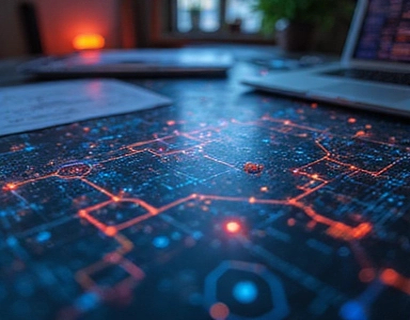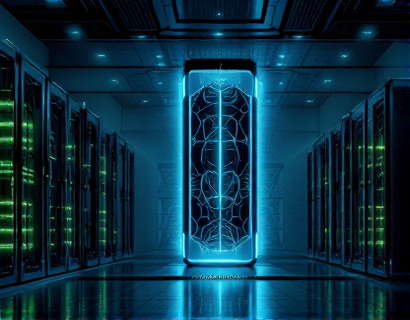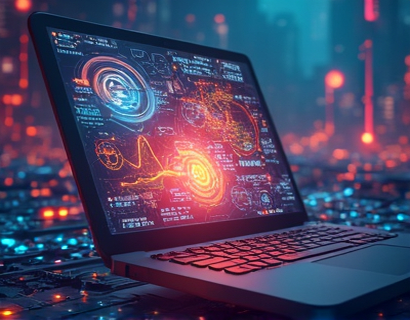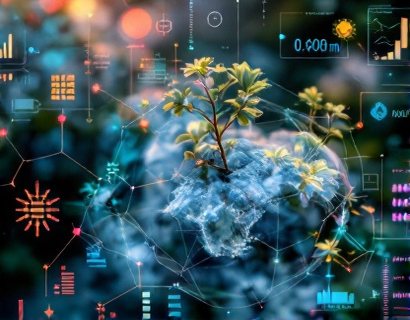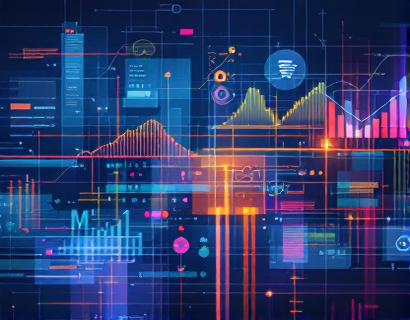NFTs Unleashed: Transforming Digital Ownership for Creators and Collectors in the New Era of Ucosystem Innovation
The advent of Non-Fungible Tokens, or NFTs, has ushered in a new paradigm in digital ownership, one that is redefining the way creators and collectors interact with digital assets. This transformative technology, built on blockchain, ensures that each digital item is unique and verifiably owned, offering a level of authenticity and scarcity previously unattainable in the digital realm. As we embark on this revolutionary journey, it's essential to understand how NFTs are reshaping the landscape of digital creativity and collection, providing unprecedented opportunities for innovation and engagement.
The concept of digital ownership has long been a topic of debate, with the intangible nature of digital assets posing challenges to traditional notions of possession and value. NFTs address these challenges by leveraging blockchain technology to create a transparent and immutable record of ownership. Each NFT is a unique token that represents ownership of a digital asset, such as artwork, music, videos, or even virtual real estate. This uniqueness is what sets NFTs apart from cryptocurrencies like Bitcoin, which are fungible and interchangeable.
For creators, NFTs offer a powerful tool to monetize their digital work in ways that were previously impossible. The ability to tokenize digital art, music, and other creative outputs allows artists to sell their work directly to collectors, bypassing traditional intermediaries such as galleries and record labels. This direct connection not only ensures a fairer distribution of revenue but also empowers creators to build a loyal fanbase and community around their work. The transparency of blockchain technology ensures that transactions are secure and verifiable, reducing the risk of fraud and counterfeiting.
Collectors, on the other hand, gain access to a new frontier of digital collectibles that offer true ownership and scarcity. Unlike physical collectibles, digital assets can be easily replicated and distributed, but NFTs provide a solution by ensuring that only one token represents the ownership of a specific digital item. This scarcity is what drives value in the digital collectibles market, making NFTs highly sought after by enthusiasts and investors alike. The ability to own a unique piece of digital history, such as a rare in-game item or a limited edition digital artwork, is a compelling proposition for many collectors.
The ecosystem surrounding NFTs is rapidly evolving, with new platforms and projects emerging to cater to the growing demand for digital ownership. These platforms provide a suite of tools and services designed to simplify the process of creating, trading, and managing NFTs. From user-friendly interfaces for minting and listing digital assets to advanced marketplaces for buying and selling NFTs, these platforms are making it easier than ever for both creators and collectors to participate in the NFT space.
One of the key features of these platforms is the emphasis on community and collaboration. By fostering a dynamic and engaged user base, these platforms create an environment where creativity and innovation thrive. Creators can share their work, receive feedback, and collaborate with other artists, while collectors can connect with like-minded individuals, participate in discussions, and stay updated on the latest trends and opportunities. This sense of community is crucial for the sustained growth and development of the NFT ecosystem.
The technology behind NFTs is built on blockchain, a decentralized and distributed ledger that records transactions across multiple computers. This technology ensures that once an NFT is created and sold, the transaction is permanent and cannot be altered. The use of smart contracts further enhances the functionality of NFTs by automating certain actions, such as royalty payments to creators when their work is resold. This feature, known as royalties, ensures that artists continue to benefit from the value their work generates, even after the initial sale.
For creators, the process of minting an NFT involves converting their digital asset into a unique token on a blockchain network. This typically involves selecting a blockchain platform, such as Ethereum, and using a wallet to sign the transaction. The creator then uploads the digital asset and sets metadata, which includes information such as the title, description, and price. Once minted, the NFT is listed on a marketplace or directly to potential buyers, where it can be sold or traded.
For collectors, purchasing an NFT involves selecting a desired asset from a marketplace or direct listing and completing a transaction using cryptocurrency. The buyer receives the NFT, which is stored in their digital wallet, and gains proof of ownership through the blockchain. This ownership can be verified by anyone, adding a layer of trust and authenticity to the transaction. Collectors can also choose to hold their NFTs in a wallet, allowing them to manage their digital collection securely and efficiently.
The impact of NFTs extends beyond the realms of art and collectibles, with applications in various industries such as gaming, real estate, and entertainment. In gaming, NFTs can represent unique in-game items or characters, providing players with true ownership and the ability to trade or sell these assets outside the game. In real estate, NFTs can tokenize property rights, making it easier to buy, sell, and transfer ownership of physical or virtual properties. In entertainment, NFTs can create immersive experiences, such as virtual concerts or exclusive content, offering fans new ways to engage with their favorite artists and creators.
However, the NFT space is not without its challenges. The environmental impact of blockchain technology, particularly proof-of-work blockchains like Ethereum, has been a point of concern. The high energy consumption associated with mining and transaction processing has led to calls for more sustainable solutions. In response, many projects are exploring alternative blockchain platforms and consensus mechanisms, such as proof-of-stake, to reduce the environmental footprint of NFTs.
Another challenge is the volatility of the cryptocurrency market, which can affect the value of NFTs. While some NFTs have achieved remarkable success and sold for millions, others may depreciate in value over time. This volatility requires collectors to be well-informed and cautious in their investments, understanding the market dynamics and the potential risks involved.
Despite these challenges, the potential benefits of NFTs for creators and collectors are significant. The ability to monetize digital work, own unique digital assets, and participate in a vibrant and growing community are compelling reasons to explore this new frontier. As the technology matures and more platforms emerge, the NFT ecosystem is poised to become an integral part of the digital landscape, offering endless possibilities for creativity and innovation.
In conclusion, NFTs are revolutionizing digital ownership by providing a secure, transparent, and community-driven platform for creators and collectors. By leveraging blockchain technology, NFTs ensure that digital assets are unique, verifiable, and ownership can be proven. As the ecosystem continues to evolve, it is essential for creators and collectors to stay informed and engaged, embracing the opportunities and addressing the challenges that come with this exciting new era of digital assets.








